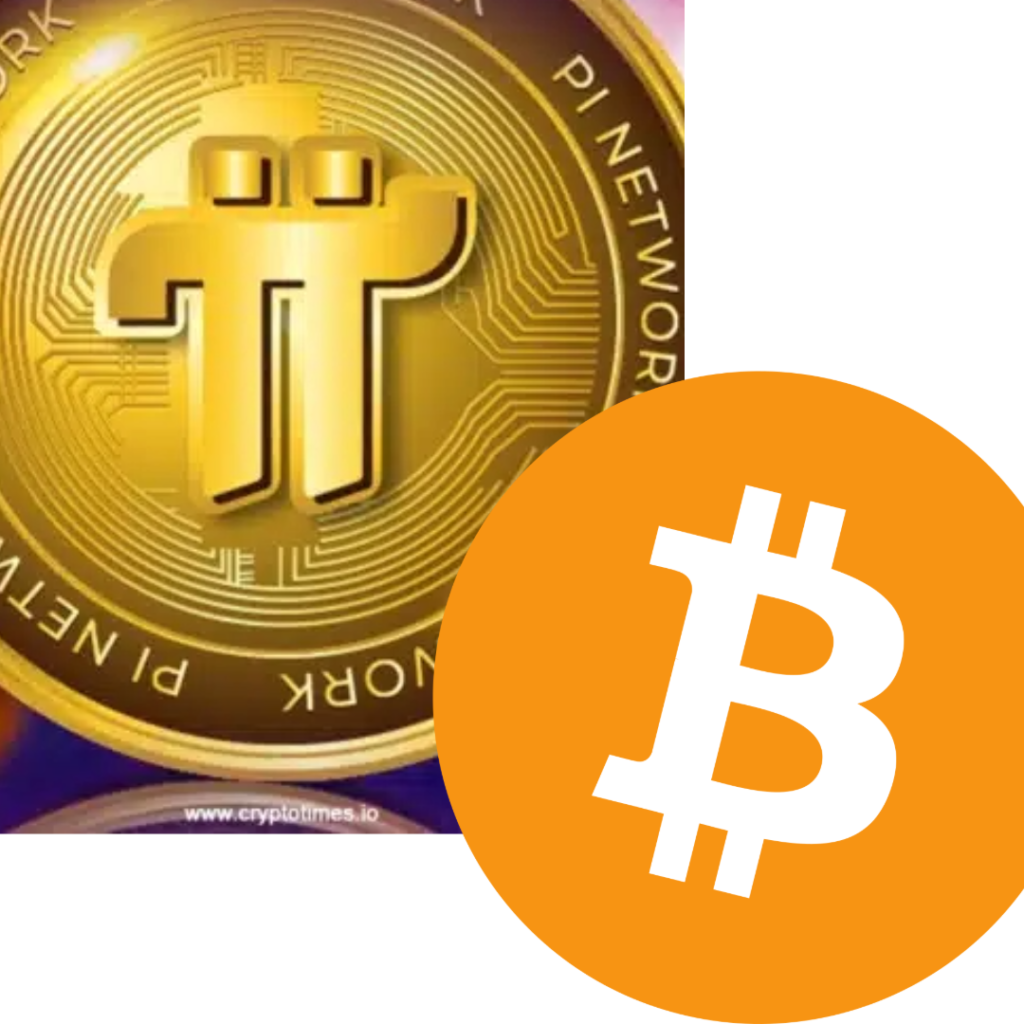Pi Coin vs Bitcoin: Understanding the Differences, Opportunities, and Future Potential

Cryptocurrency continues to revolutionize the world of finance, bringing with it new forms of investment and financial freedom. Two names that have recently captured the attention of the global community are Pi Coin and Bitcoin. While Bitcoin has established itself as the leading cryptocurrency, Pi Coin is a newcomer with an innovative approach. But what exactly are the key differences between these two digital assets? And what does the future hold for Pi Coin versus Bitcoin? In this article, we explore the world of Pi Coin and Bitcoin, highlighting their unique features, benefits, and challenges.
What is Pi Coin?
Pi Coin is a relatively new cryptocurrency that aims to make cryptocurrency mining more accessible to the masses. Launched in 2019 by a team of Stanford graduates, Pi Coin is based on the concept of a mobile-first approach to cryptocurrency. Unlike traditional cryptocurrencies, Pi Coin can be mined using a smartphone without the need for expensive hardware or large energy consumption. The project aims to democratize cryptocurrency by allowing everyone, regardless of their technical background, to participate in the mining process.
Mining Pi Coin: A Unique Approach
One of the key aspects of Pi Coin is its mining process. Traditional cryptocurrencies like Bitcoin require complex computational tasks to mine coins, which often necessitate specialized hardware (such as ASICs) and consumes massive amounts of electricity. Pi Coin, on the other hand, uses a consensus algorithm called the Stellar Consensus Protocol (SCP) that allows users to mine the coin using only their smartphones.
To mine Pi Coin, users simply need to download the Pi Network app and engage in a process called "mining" by tapping a button each day. This approach eliminates the need for expensive mining rigs and reduces the environmental impact, making Pi Coin more accessible and sustainable. However, there is a catch – the coin's value is not yet fully realized, and its market price is still undetermined until the Pi Network officially launches its mainnet.
What is Bitcoin?
Bitcoin, on the other hand, is the original cryptocurrency, created in 2009 by an anonymous individual or group of individuals known as Satoshi Nakamoto. Bitcoin operates on a decentralized, peer-to-peer network, where transactions are recorded on a public ledger called the blockchain. Bitcoin’s mining process is highly resource-intensive and requires powerful computers to solve complex cryptographic puzzles in a process known as Proof of Work (PoW).
Bitcoin is widely regarded as a store of value and has become the standard by which other cryptocurrencies are measured. Its limited supply of 21 million coins, along with its strong security model, has helped establish Bitcoin as a trusted asset in the world of finance. Over the years, Bitcoin has earned its reputation as the first and most valuable cryptocurrency, with its price reaching all-time highs and attracting institutional investors.
Mining Bitcoin: The High Stakes
Bitcoin mining involves solving complex mathematical problems, which requires enormous computational power. This process is known as Proof of Work (PoW), and the difficulty of the problems increases as more miners join the network. As a result, Bitcoin mining has become an expensive and competitive endeavor, requiring specialized hardware known as ASICs (Application-Specific Integrated Circuits).
This expensive infrastructure and high electricity consumption have led some critics to question the sustainability of Bitcoin mining. Despite these challenges, Bitcoin's mining process ensures the integrity and security of its network, and the high energy costs reflect the value that Bitcoin has attained as a digital asset.
Pi Coin vs Bitcoin: Key Differences
While Pi Coin and Bitcoin share the common goal of decentralized digital currencies, their approaches differ significantly. Let's take a closer look at the main differences:
1. Mining Process
The mining process is where Pi Coin and Bitcoin diverge the most. Bitcoin requires specialized hardware and a significant amount of electricity to mine, making it inaccessible to many people. Pi Coin, on the other hand, offers a mobile-first approach where users can mine coins directly from their smartphones with minimal energy usage. This makes Pi Coin a more accessible and eco-friendly option for individuals who want to participate in the cryptocurrency ecosystem.
2. Accessibility
Pi Coin’s primary goal is to make cryptocurrency accessible to everyone. Its mobile app allows individuals with no technical knowledge to mine Pi Coin, democratizing the mining process. Bitcoin, by contrast, has become a complex and expensive endeavor. Mining Bitcoin requires advanced knowledge of computer hardware and software, as well as significant financial investment in mining rigs and electricity.
3. Market Value and Adoption
Bitcoin is the pioneer of cryptocurrency and holds a strong position as a digital store of value. It has achieved widespread adoption, with millions of users, institutional investors, and companies accepting Bitcoin as payment. Pi Coin, however, is still in its infancy. As of now, Pi Coin’s market value is not fully established, and its price is highly speculative. The coin has yet to undergo full adoption and market testing, which makes its future uncertain.
4. Network Security
Bitcoin's Proof of Work (PoW) system is widely regarded as one of the most secure and decentralized consensus mechanisms in the cryptocurrency space. The process requires miners to solve complex cryptographic puzzles to validate transactions, which makes it difficult for malicious actors to manipulate the system.
Pi Coin, on the other hand, uses the Stellar Consensus Protocol (SCP), which relies on a smaller group of trusted validators to reach consensus. While this system is more energy-efficient, some critics argue that it could compromise decentralization and security in the long term.
The Future of Pi Coin: Challenges and Opportunities
Pi Coin’s future is still uncertain, but its unique approach to mining and accessibility makes it an interesting project to watch. However, there are several challenges that Pi Coin must overcome before it can compete with Bitcoin on the global stage:
1. KYC Process for Wallet Migration
One of the major hurdles Pi Coin faces is the requirement for users to pass a Know Your Customer (KYC) process to transfer mined coins to a wallet. While anyone can create a wallet and buy Pi Coin, migrating mined Pi to a wallet requires passing this verification process. This step ensures the legitimacy of users and adds a layer of security, but it also limits the ease of access for some individuals.
2. Building Trust and Adoption
For Pi Coin to become a legitimate cryptocurrency, it must gain the trust of users and investors. This involves establishing a functioning network, ensuring security, and creating partnerships with businesses and exchanges. While Pi Coin has a large user base, it must demonstrate its value and utility before it can reach Bitcoin’s level of adoption.
3. Market Volatility
Both Pi Coin and Bitcoin face the challenge of market volatility. While Bitcoin has already proven itself as a store of value, Pi Coin’s price is still speculative and largely dependent on the success of the Pi Network. The future value of Pi Coin will depend on its ability to transition from a mining app to a fully-fledged cryptocurrency with real-world utility.
Conclusion: Pi Coin vs Bitcoin – Which One Will Win?
Pi Coin and Bitcoin are both promising cryptocurrencies with distinct approaches. Bitcoin has firmly established itself as the leader in the space, with a robust security model, widespread adoption, and a proven track record. Pi Coin, on the other hand, offers an innovative and mobile-first mining solution, making cryptocurrency more accessible to the masses.
While Pi Coin has the potential to disrupt the cryptocurrency space, it faces several challenges, including the KYC process for wallet migration, market volatility, and building trust among users. Ultimately, only time will tell whether Pi Coin can become a serious contender to Bitcoin’s dominance or if it will remain a niche project with a limited user base.
For now, both cryptocurrencies offer unique opportunities for investors and users alike. Whether you choose to mine Pi Coin or invest in Bitcoin, the world of cryptocurrency continues to evolve, bringing new possibilities for financial freedom and innovation.

Leave a Reply